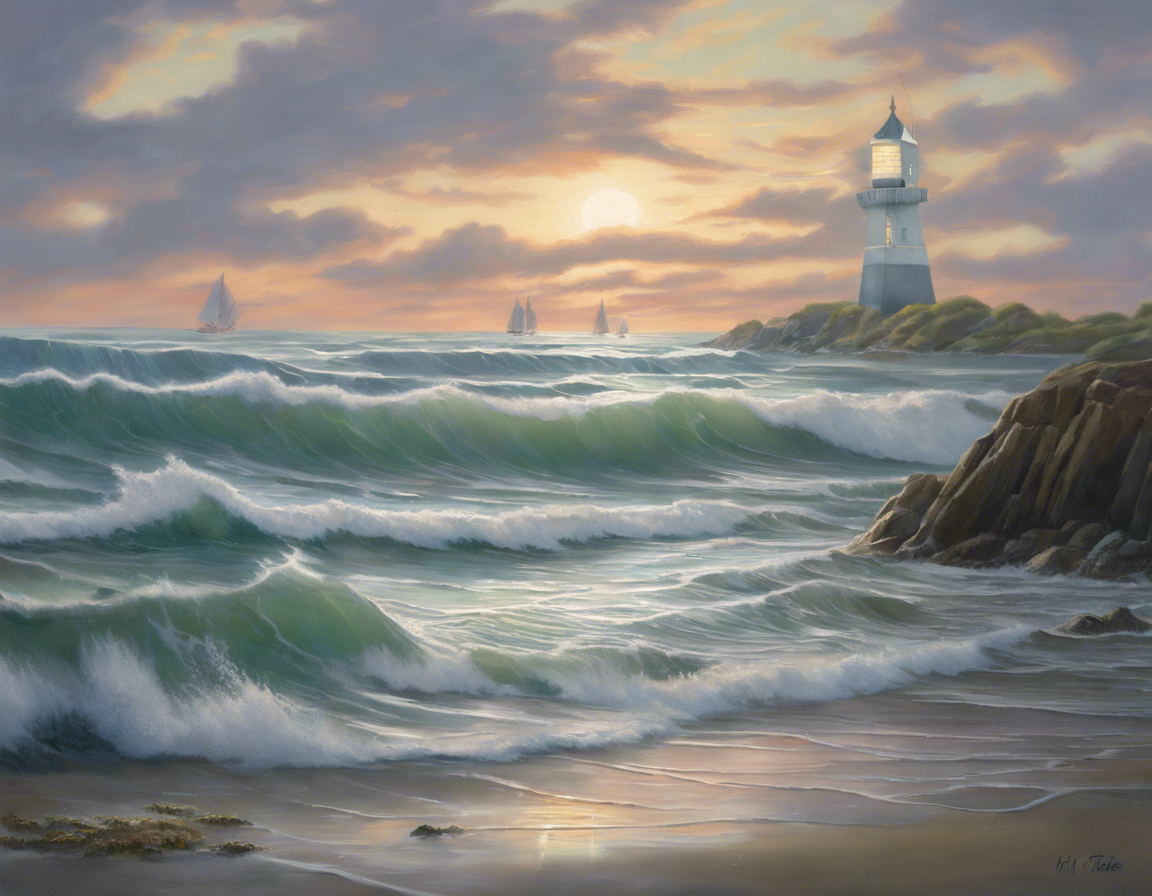With its mesmerizing rhythm and powerful force, the tide holds a mysterious and captivating allure. For centuries, civilizations have been drawn to the ebb and flow of the ocean, finding solace in its predictable yet ever-changing nature. From artistic inspiration to spiritual symbolism, the tide’s influence transcends physical boundaries, touching the hearts and minds of people around the world.
Understanding the Tide
What is the Tide?
The tide is the rise and fall of sea levels caused by the gravitational pull of the moon and the sun on the Earth’s oceans. This cyclical phenomenon occurs twice a day, with high tides and low tides following a predictable pattern based on the positions of the celestial bodies.
Types of Tides
There are two primary types of tides: diurnal tides (one high tide and one low tide each day) and semidiurnal tides (two high tides and two low tides each day). The type of tide experienced is influenced by factors such as the geography of the coastline and the location of the moon and sun.
Factors Influencing the Tide
Several factors can influence the intensity and timing of tides, including the gravitational pull of the moon and sun, the shape of the coastline, and the depth of the ocean floor. Tidal patterns can also be affected by meteorological conditions such as winds and atmospheric pressure.
The Beauty of High Waters
High Tide Phenomena
During high tide, the ocean’s waters rise to their peak level, covering shorelines and transforming coastal landscapes. This period is often characterized by powerful waves, dynamic currents, and the mesmerizing sight of water reaching new heights along the coast.
Coastal Erosion and Deposition
High tides play a significant role in shaping coastal environments through processes such as erosion and deposition. The relentless force of high waters can gradually wear away cliffs and rock formations, while simultaneously depositing sediments and creating new land formations over time.
Biodiversity and Marine Life
High tides offer unique opportunities to observe a diverse array of marine life, from vibrant tidal pools teeming with sea creatures to expansive estuaries bustling with activity. These dynamic ecosystems are home to a wide range of species that have adapted to thrive in the ever-changing conditions of the tidal zone.
Embracing the Tide’s Influence
Cultural Significance
Throughout history, the tide has held profound cultural significance for coastal communities around the world. From ancient myths and folklore to modern-day rituals and celebrations, the ebb and flow of the tide have inspired a rich tapestry of traditions that reflect humanity’s deep connection to the sea.
Artistic Inspiration
Artists, poets, and writers have long drawn inspiration from the beauty and mystery of the tide. The rhythmic dance of the waves, the play of light on water, and the primal power of the ocean have served as muses for countless creative works, capturing the essence of the tide’s allure in paintings, poetry, and literature.
Spiritual Symbolism
In many spiritual traditions, the tide symbolizes themes of renewal, cycles of life, and the interconnectedness of all things. The rhythmic motion of the tide is often seen as a metaphor for the natural rhythms of existence, reminding us of the eternal flow of time and the impermanence of all things.
Navigating the Tide’s Challenges
Tidal Hazards
While the tide’s beauty is undeniable, it also poses certain risks and challenges for coastal communities. Tidal hazards such as storm surges, coastal flooding, and erosion can have devastating effects on infrastructure, ecosystems, and livelihoods, underscoring the importance of understanding and preparing for the impacts of high waters.
Climate Change and Tidal Patterns
The rising specter of climate change is leading to shifts in global sea levels and tidal patterns, with implications for coastal areas worldwide. Rising temperatures, melting polar ice caps, and changing ocean currents are contributing to more frequent and severe high tides, highlighting the urgent need for sustainable coastal management strategies.
Frequently Asked Questions (FAQs)
1. Can high tides cause flooding?
Answer: Yes, high tides can lead to coastal flooding, especially when combined with factors such as storm surges, heavy rainfall, and sea level rise.
2. How do tides impact marine ecosystems?
Answer: Tides play a crucial role in shaping marine ecosystems by influencing water circulation, nutrient transport, and habitat availability for a wide range of species.
3. Are there ways to predict tidal patterns?
Answer: Yes, tidal patterns can be predicted using tidal charts, mathematical models, and observations of celestial bodies such as the moon and sun.
4. What is the difference between spring tides and neap tides?
Answer: Spring tides occur during the full moon and new moon phases, resulting in higher high tides and lower low tides, while neap tides occur during the first and third quarter moons, leading to lower high tides and higher low tides.
5. How can communities mitigate the impact of high tides?
Answer: Communities can implement strategies such as coastal defense structures, natural buffers like mangroves and dunes, and land use planning to reduce the impact of high tides on coastal areas.
In conclusion, the tide’s rhythmic dance embodies a dynamic and ever-changing force that shapes coastlines, inspires creativity, and reflects the interconnectedness of nature. By embracing the beauty of high waters and understanding the challenges they present, we can navigate the tides with reverence and resilience, honoring the timeless power and grace of the ocean’s eternal rhythm.
